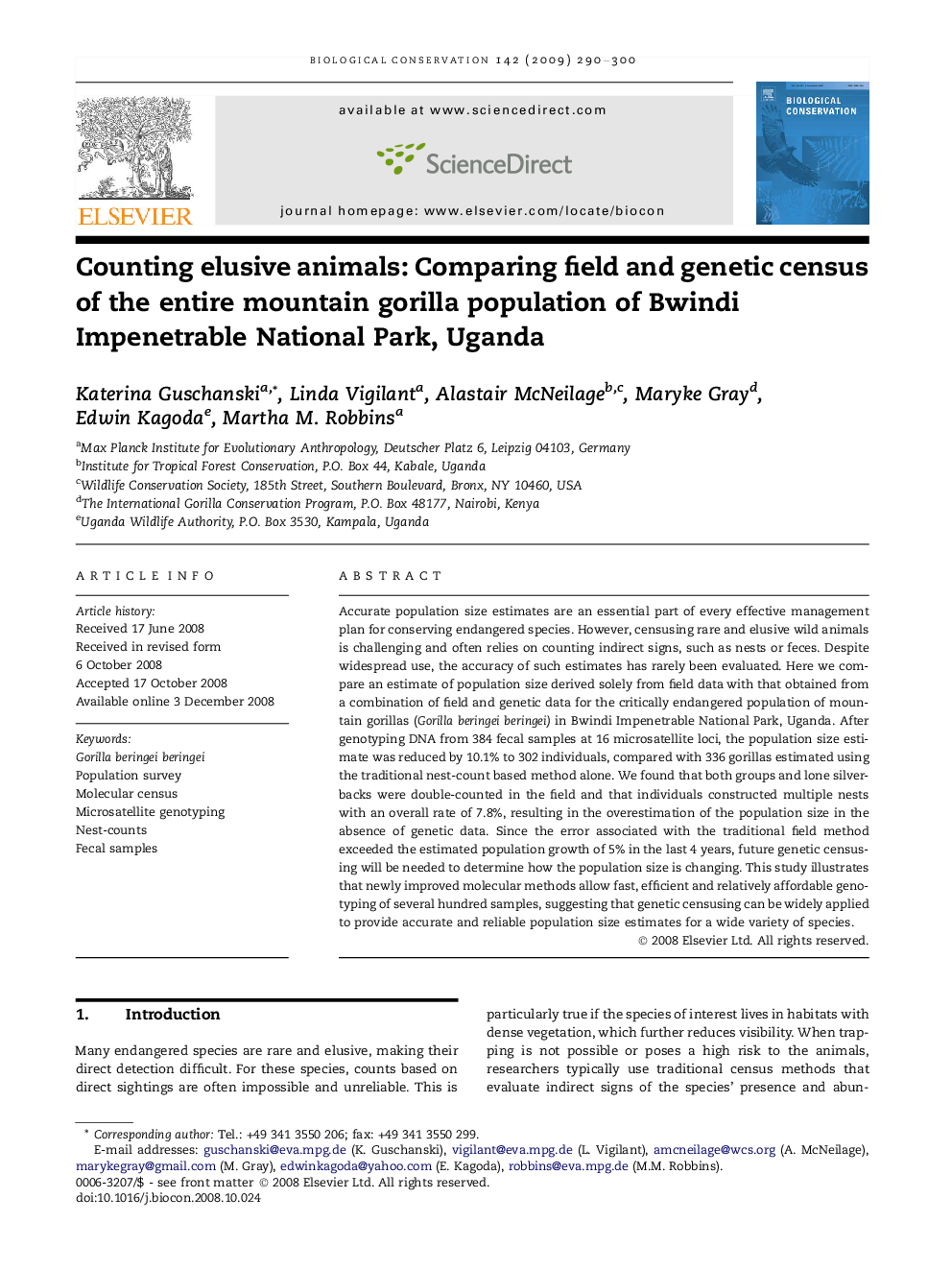| Article ID | Journal | Published Year | Pages | File Type |
|---|---|---|---|---|
| 4386578 | Biological Conservation | 2009 | 11 Pages |
Accurate population size estimates are an essential part of every effective management plan for conserving endangered species. However, censusing rare and elusive wild animals is challenging and often relies on counting indirect signs, such as nests or feces. Despite widespread use, the accuracy of such estimates has rarely been evaluated. Here we compare an estimate of population size derived solely from field data with that obtained from a combination of field and genetic data for the critically endangered population of mountain gorillas (Gorilla beringei beringei) in Bwindi Impenetrable National Park, Uganda. After genotyping DNA from 384 fecal samples at 16 microsatellite loci, the population size estimate was reduced by 10.1% to 302 individuals, compared with 336 gorillas estimated using the traditional nest-count based method alone. We found that both groups and lone silverbacks were double-counted in the field and that individuals constructed multiple nests with an overall rate of 7.8%, resulting in the overestimation of the population size in the absence of genetic data. Since the error associated with the traditional field method exceeded the estimated population growth of 5% in the last 4 years, future genetic censusing will be needed to determine how the population size is changing. This study illustrates that newly improved molecular methods allow fast, efficient and relatively affordable genotyping of several hundred samples, suggesting that genetic censusing can be widely applied to provide accurate and reliable population size estimates for a wide variety of species.
